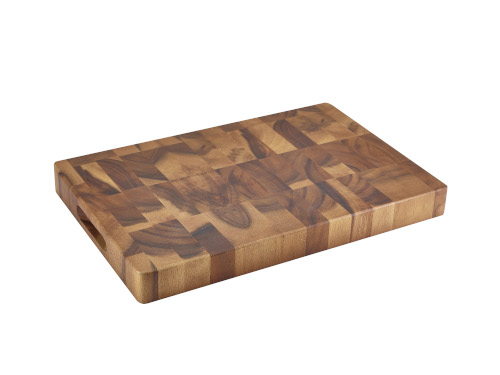The Use Of Chopping Boards In The Hospitality Industry
In the dynamic world of the hospitality industry, where every detail matters, the choice of kitchen tools plays a pivotal role in shaping the culinary experience. One often-overlooked yet essential item is the cutting board. In this article, we delve into the creative uses of versatile chopping boards, exploring how they can enhance both functionality and aesthetics in the hospitality sector.
Section 1: Beyond the Basics
While chopping boards are typically associated with food preparation, their functionality extends beyond mere chopping and slicing. In the hospitality industry, where efficiency is key, cutting boards can serve multiple purposes. From elegant serving platters to stylish presentation surfaces, discover how these kitchen essentials can seamlessly transition from prep stations to the dining table.
Section 2: Unconventional Materials for Distinctive Appeal
Ditch the conventional and embrace the extraordinary. Explore cutting boards made from unconventional materials that not only enhance the visual appeal of your kitchen but also add a unique touch to your culinary presentation. From slate and marble to bamboo and glass, discover the endless possibilities that go beyond the ordinary plastic or wooden cutting board.

Section 3: Showcasing Craftsmanship
Hospitality is an art, and every element in a restaurant or hotel reflects the dedication to craftsmanship. Delve into the world of expertly designed cutting boards, highlighting the meticulous attention to detail in their design and construction. Investing in quality craftsmanship can make a lasting impression on both chefs and diners.
Section 4: Customisation for Brand Identity

In a competitive industry, establishing a unique brand identity is crucial. Customised cutting boards can be tailored to showcase your logo, brand colours, or even specific themes. From personalised chef stations to branded presentation surfaces, customisation could set your establishment apart. For those on a budget try a slate board that could be screen printed by a local company.
Section 5: Colour Coded Boards
Ever wondered why chefs wield an array of vibrantly coloured chopping boards in their kitchens? It’s not just for show—it’s a strategic approach to maintaining a harmonious kitchen, aligning each colour with specific food groups to improve both efficiency and food safety.

The colours and uses
- White chopping boards – bakery and dairy products
- Yellow chopping boards – cooked meat
- Brown chopping boards – root vegetables
- Red chopping boards – raw meat
- Blue chopping boards – raw fish
- Green chopping boards – salad, fruit and fresh vegetables
To help a sticker entitled “Colour Code Guide For Chopping Boards” is available here.
Now, let’s debunk a common myth—plastic boards aren’t inherently more hygienic than their wooden, glass, granite, marble, bamboo, or composite counterparts. The key lies in the meticulous cleaning and drying processes. Regardless of material, diligent maintenance is the magic wand that wards off the spectre of cross-contamination, ensuring a safe and hygienic kitchen.
As the hospitality industry continues to evolve, it’s essential to pay attention to every aspect of the dining experience. Cutting boards, often underestimated, have the potential to make a significant impact. Whether through creative uses, unconventional materials, exquisite craftsmanship, or brand customisation, these versatile kitchen tools can upgrade your culinary offerings and leave a lasting impression on your customers.

